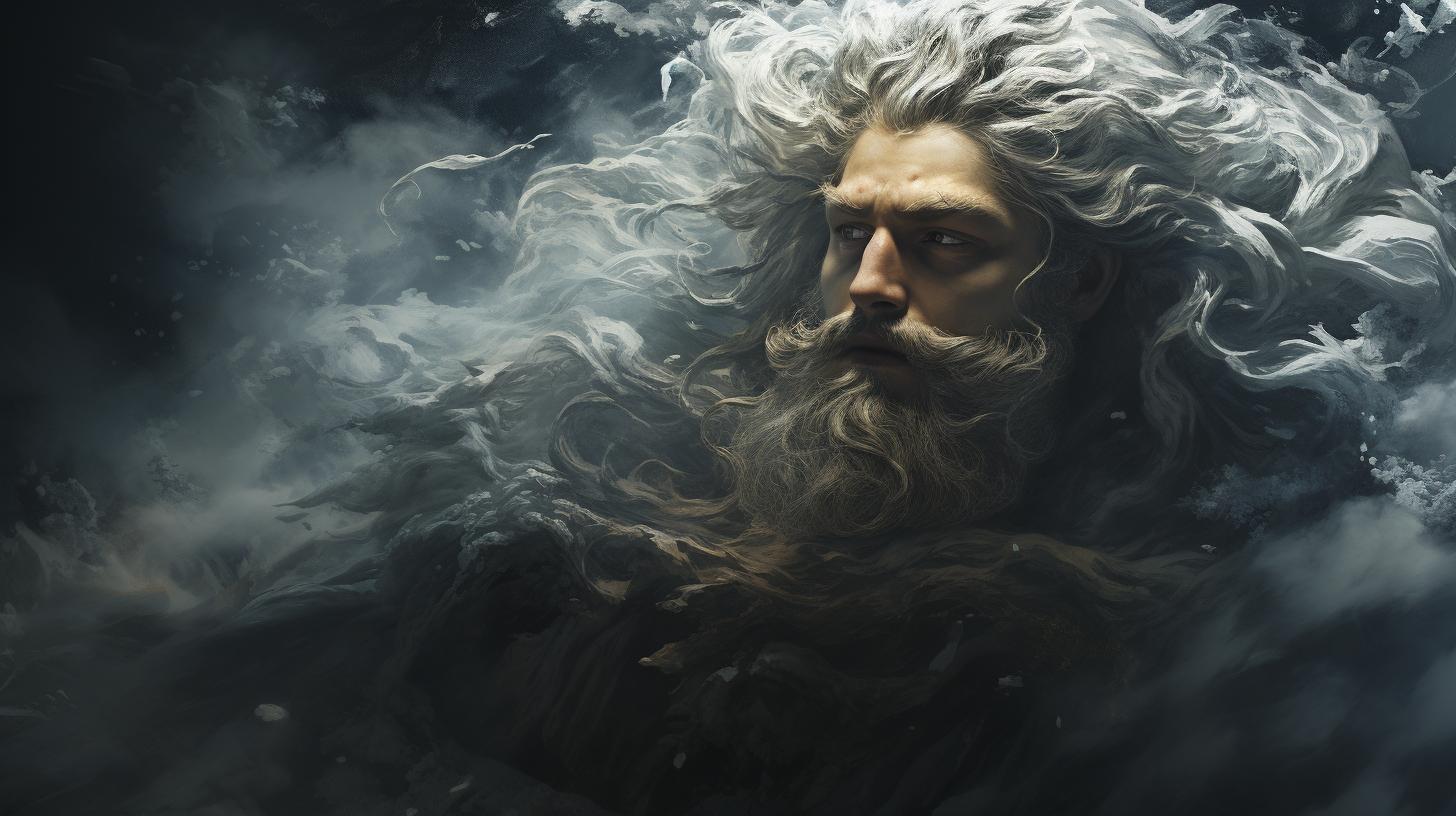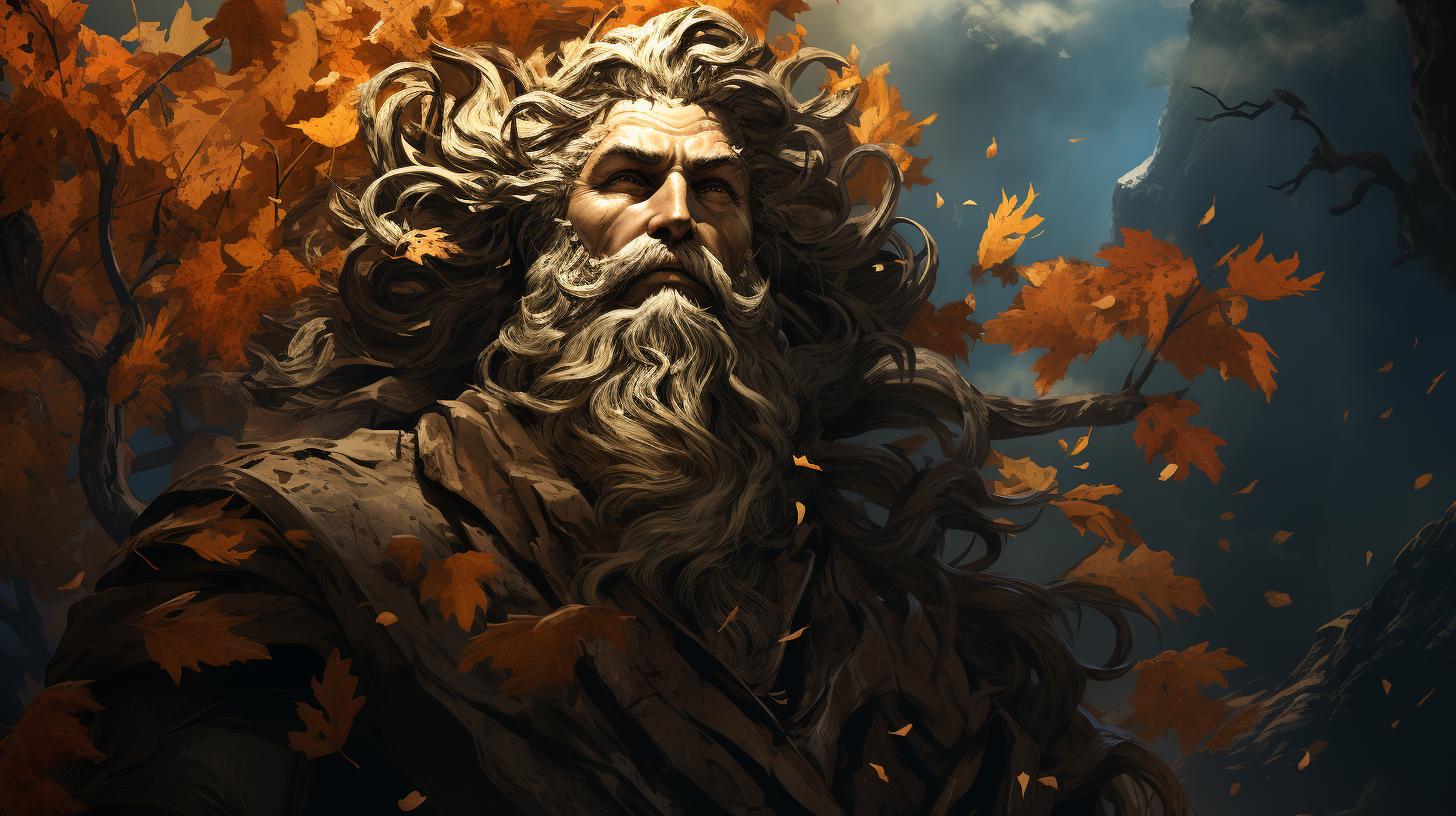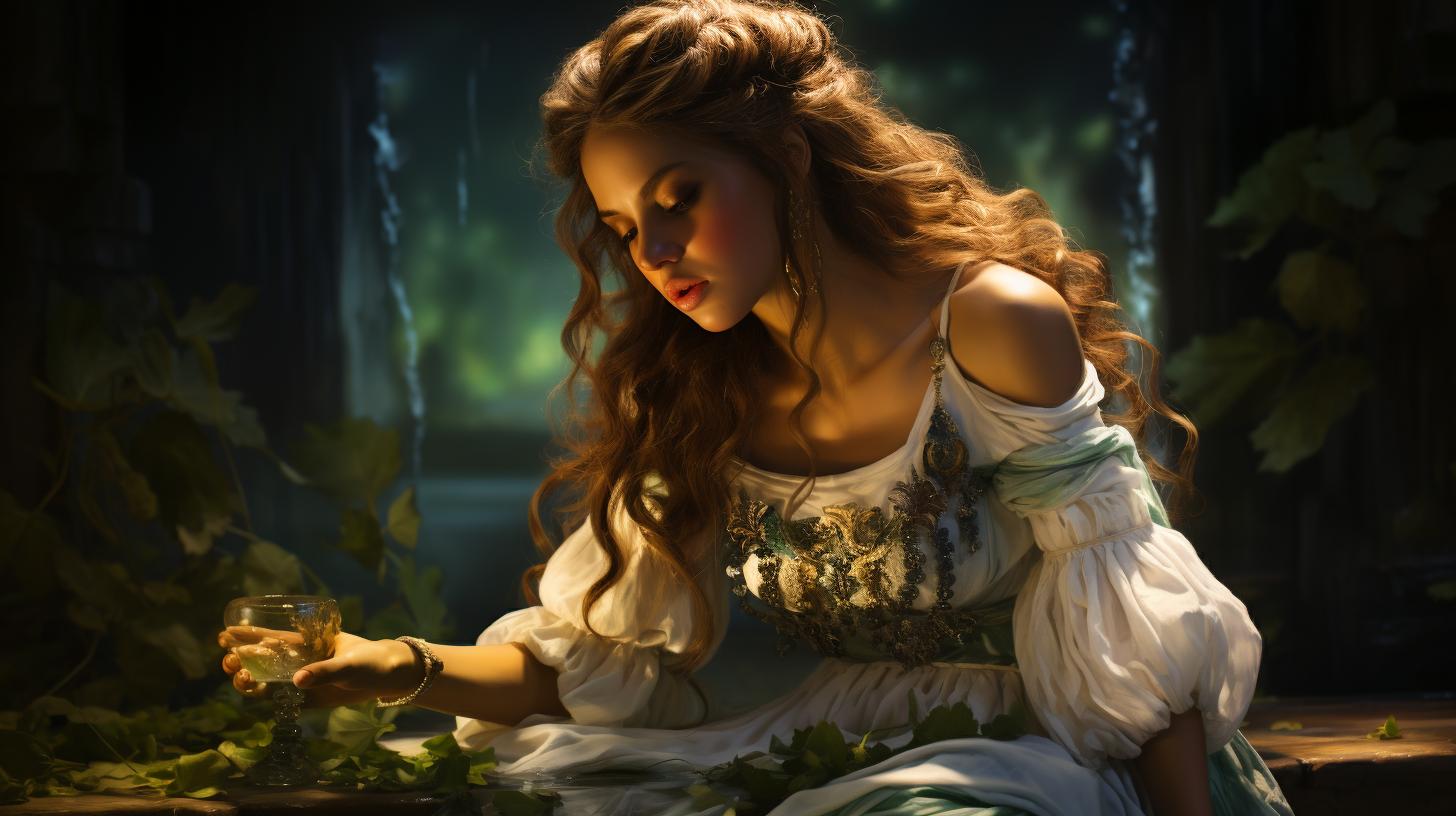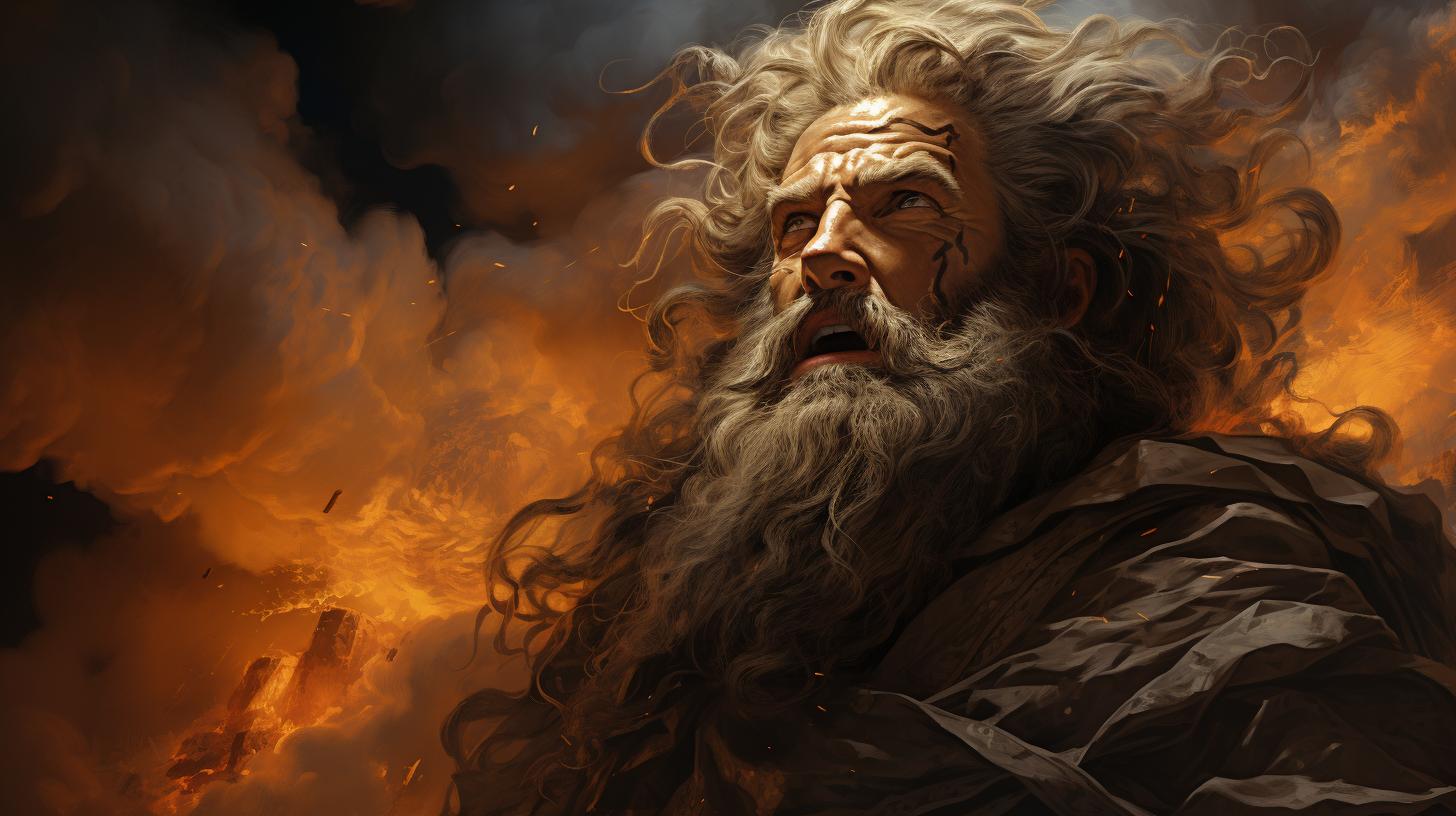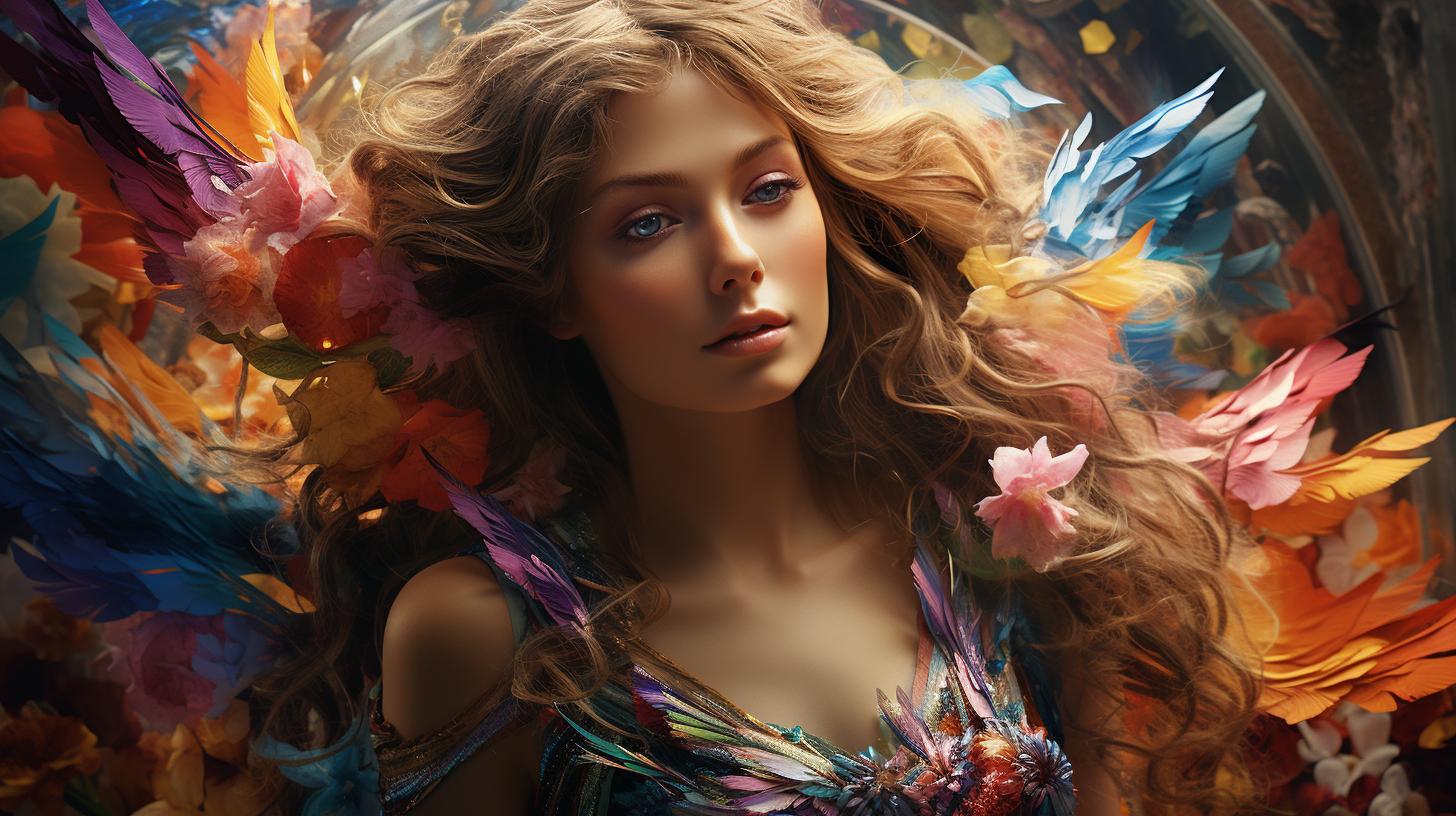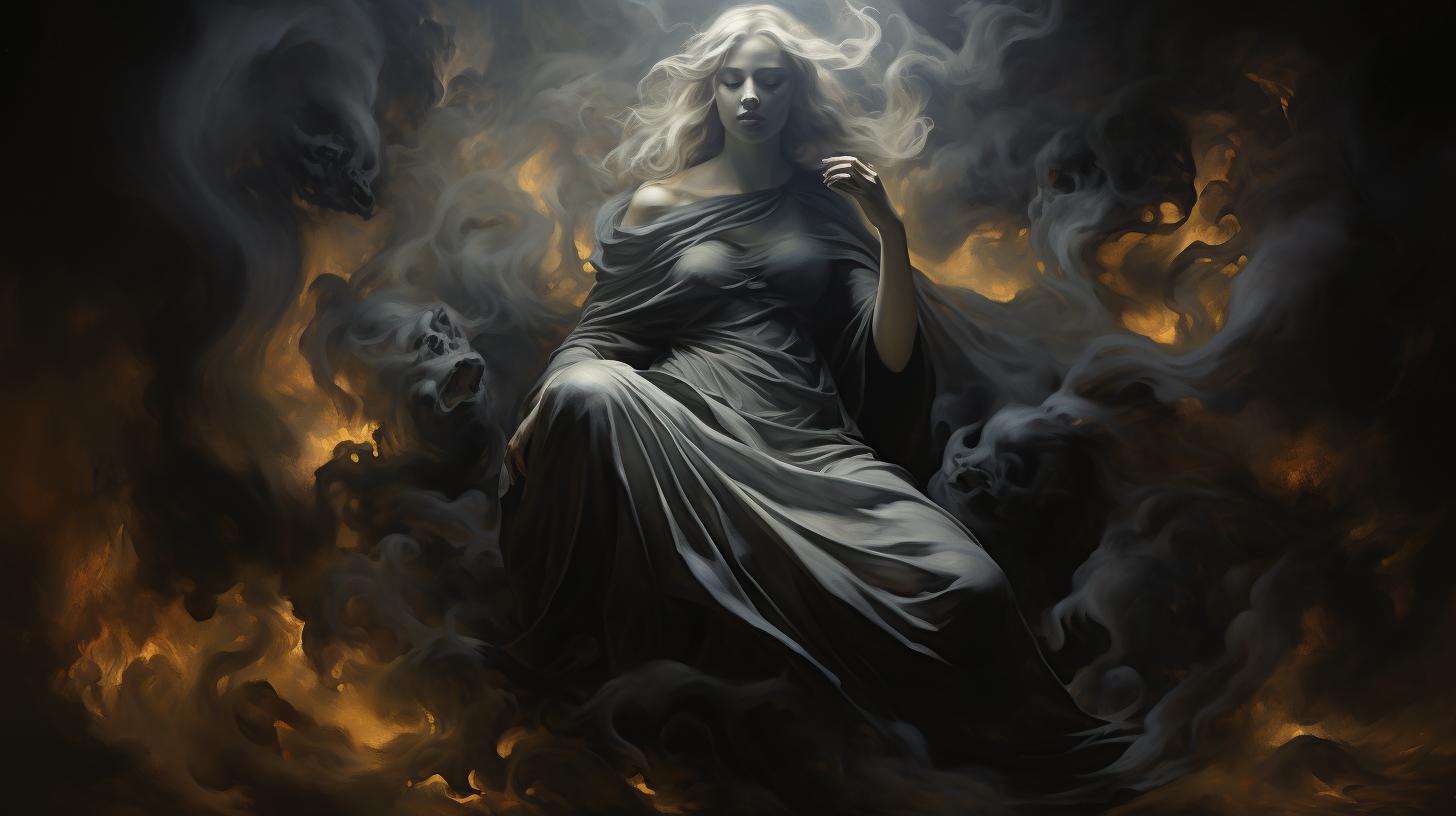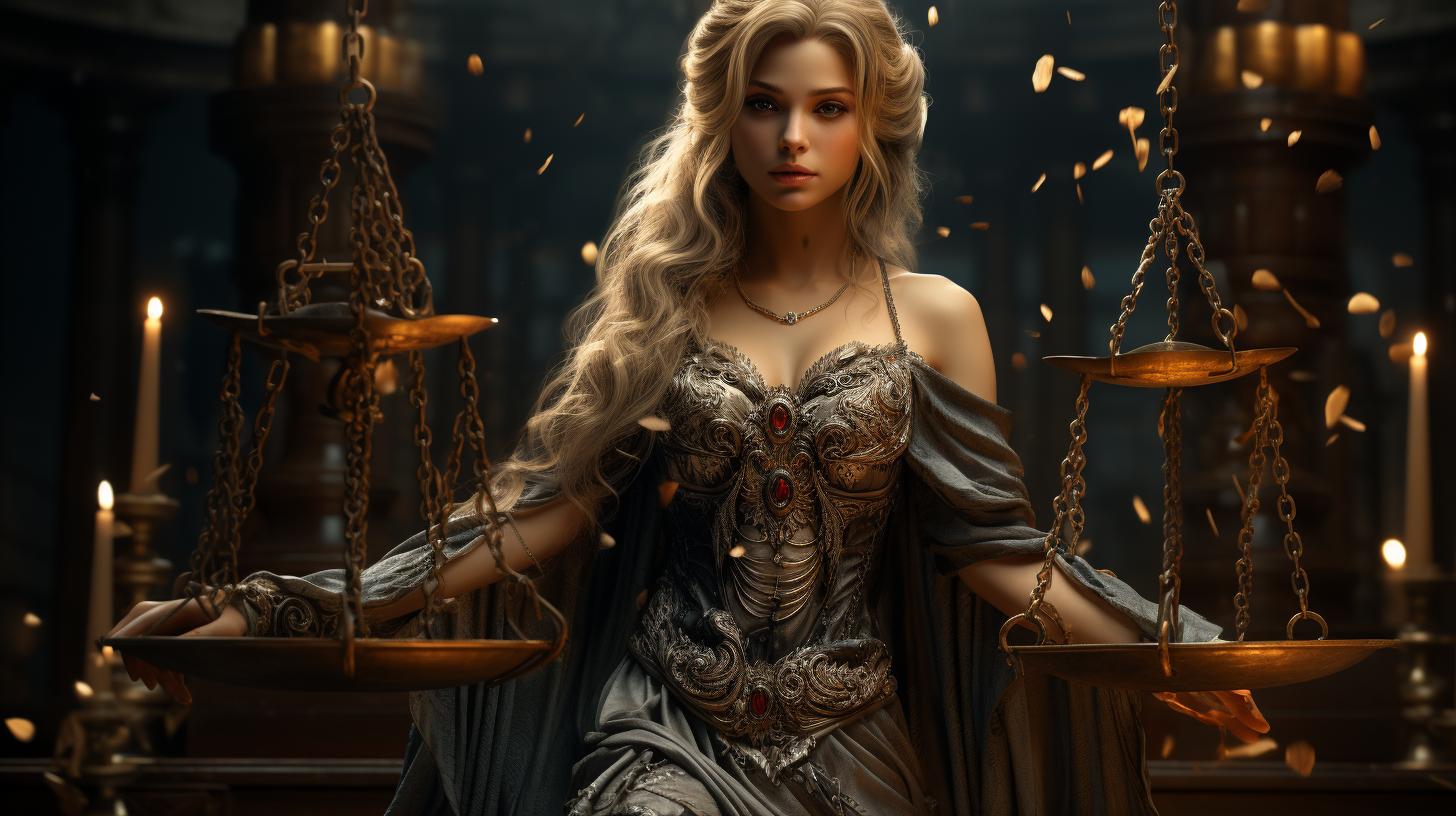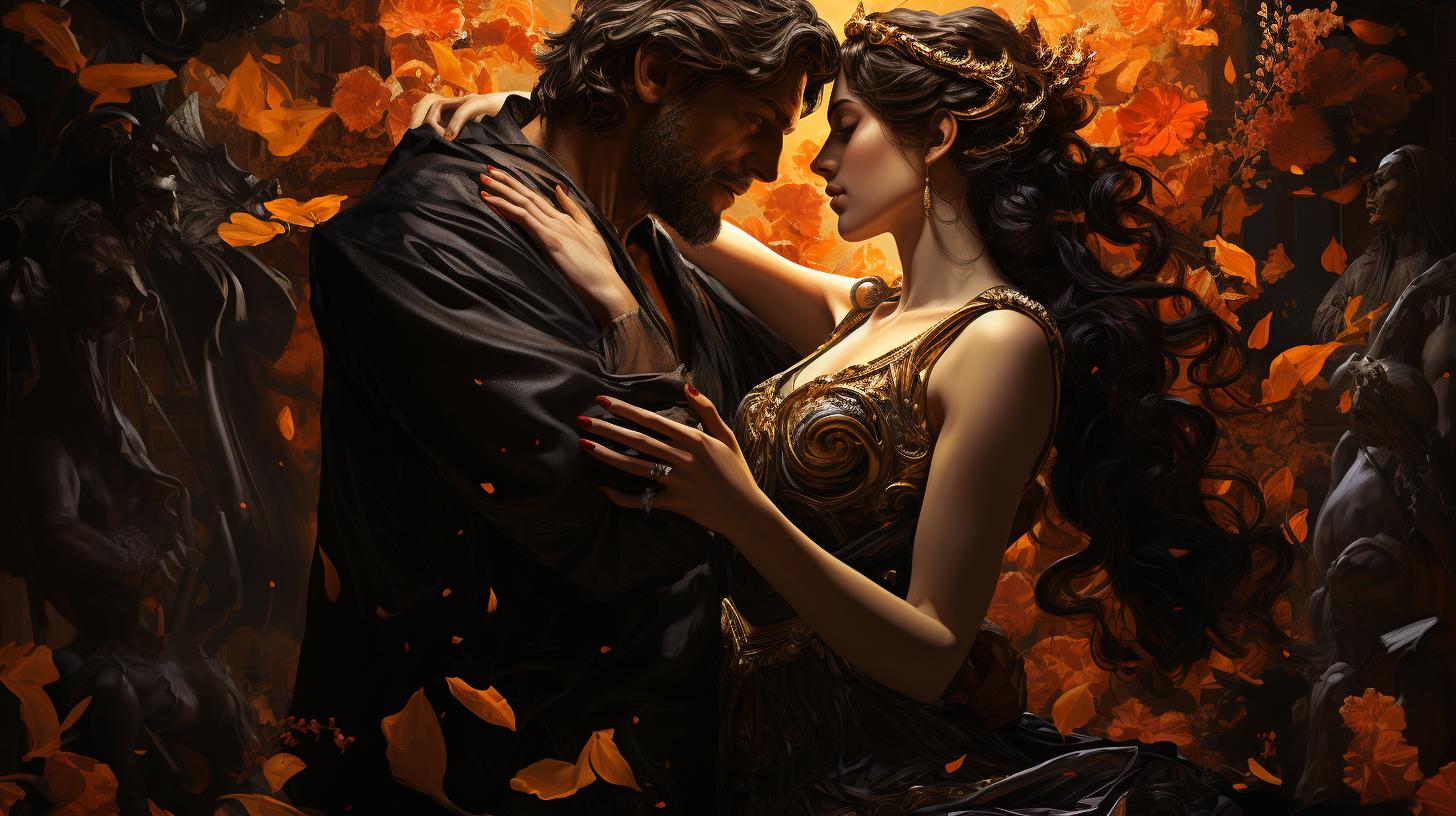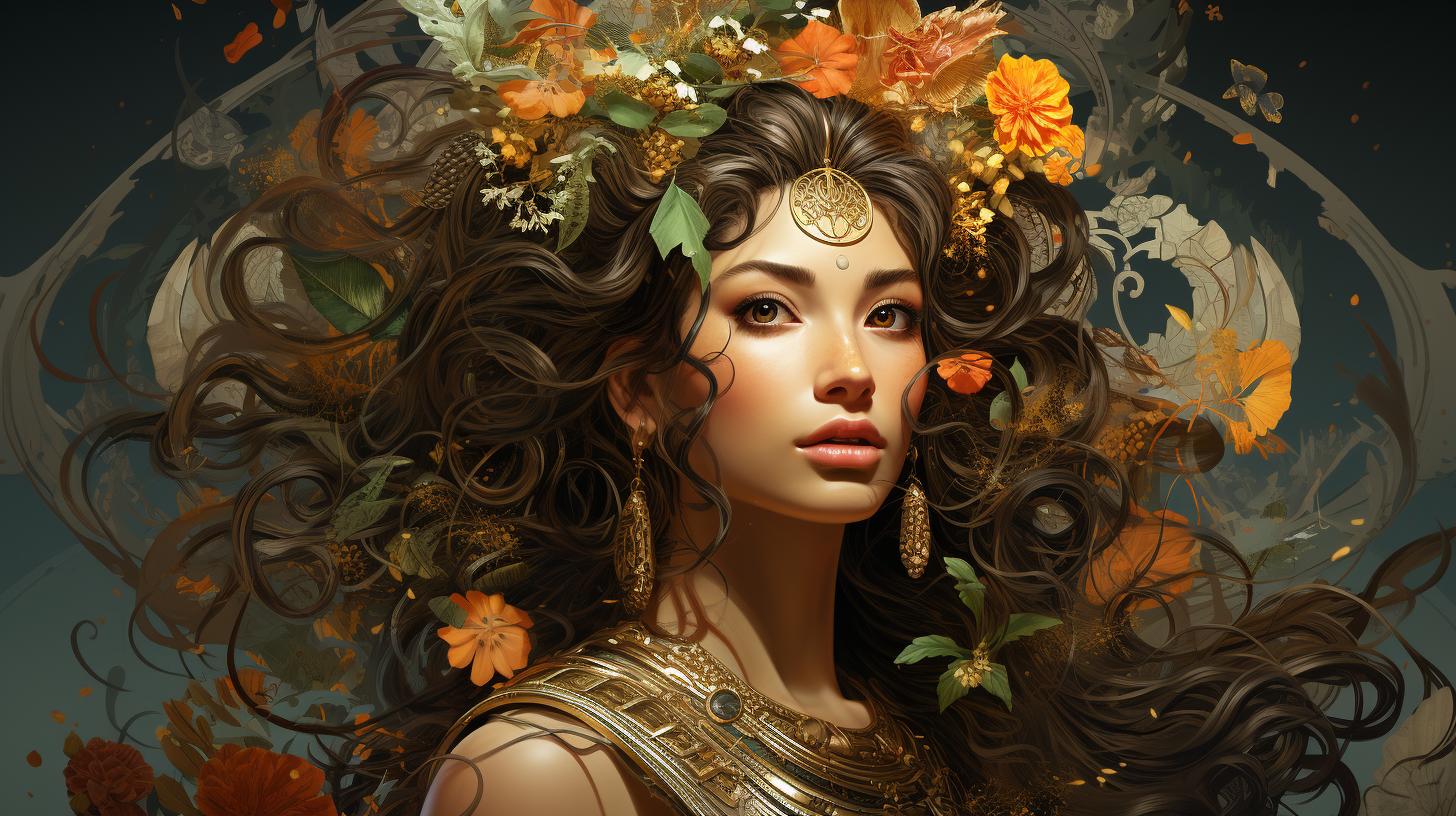Boreas: The Mighty God of the North Wind Unveiled
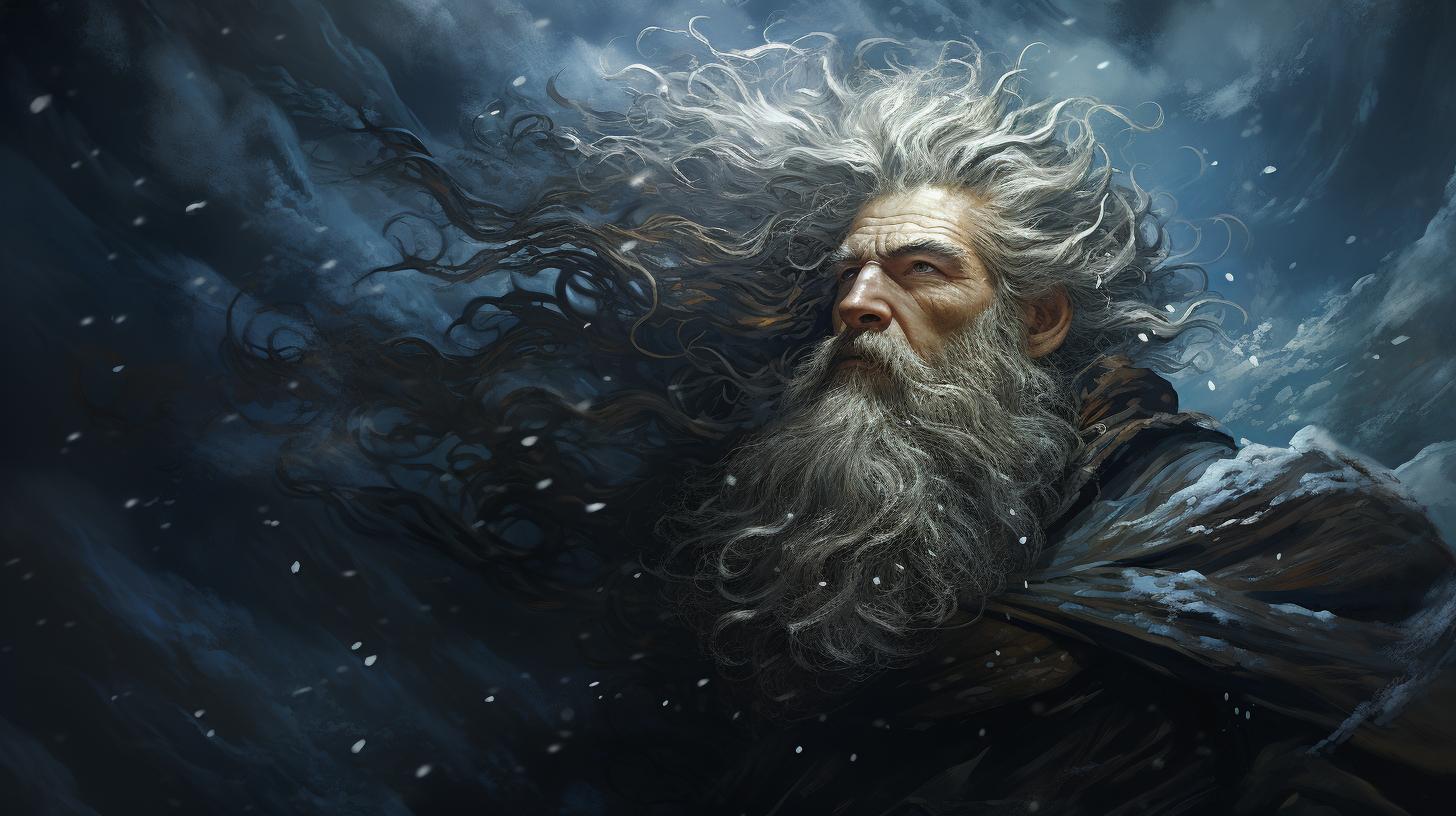
Boreas, the ancient Greek god of the north wind, storms, and winter, holds a significant place in mythology. Linked to the northeast wind by some Roman writers, Boreas is often depicted as a winged elder or a young man with unruly hair and beard, donning a flowing cloak.
Known for his prominent role in the abduction of the Athenian princess Oreithyia, Boreas is associated with horses, storms, and the winter season. His representation in art showcases his intimidating figure, sometimes even covered in ice.
In Roman mythology, Boreas finds his equivalent in Aquilo.
Boreas in Greek Mythology
Boreas, a prominent figure in Greek mythology, embodies the power of the north wind, storms, and winter. This section explores various aspects of Boreas’s role within Greek mythology and his connections to other gods and notable events.
Biographical Information of Boreas
Boreas, often depicted as an elderly man with wings or a youthful figure with unkempt hair and a beard, holds great significance as the personification of the north wind. His iconic portrayal includes carrying a seashell and donning a flowing cape.
Boreas’s origins and family background are explored in this subsection.
Boreas and the Greek Gods
In Greek mythology, Boreas has associations with numerous gods and goddesses, both as a brother and as a participant in significant events. This subsection delves into Boreas’s relationships and interactions with other deities, shedding light on the complex web of Greek mythology.
Involvement in the Trojan War
The Trojan War, a pivotal event in Greek mythology, saw the participation of Boreas in various capacities. This subsection investigates Boreas’s role during the war and any noteworthy contributions or actions attributed to him.
Boreas and the Birth of Artemis and Apollo
The birth of the twin gods Artemis and Apollo is shrouded in mythological tales, and Boreas plays a part in these narratives. This subsection explores Boreas’s involvement in the birth of these influential deities and the subsequent implications.
The Abduction of Oreithyia
The myth surrounding Boreas also includes the infamous abduction of Oreithyia, the princess of Athens. This captivating tale portrays Boreas as a powerful and impulsive deity driven by desire. The story goes that Boreas, overcome by his passion, swept down from the icy heights of the North Wind to kidnap the beautiful Oreithyia.
Boreas and the Athenian princess
Oreithyia, known for her exceptional beauty, caught the attention of Boreas, who became enamored with her radiant charm. Unable to control his overwhelming desire, Boreas seized the opportunity and whisked Oreithyia away to his wintry realm.
The abduction shattered the tranquility of Athens and plunged the city into chaos. It left Oreithyia’s father, King Erechtheus, devastated and enraged, as he desperately searched for his beloved daughter.
Mythical children of Boreas and Oreithyia
The union between Boreas and Oreithyia resulted in the birth of several children, who would become renowned figures in Greek mythology.
Their offspring included two sons, Zetes and Calais, known as the Boreads, and two daughters, Cleopatra and Chione.
- Zetes and Calais, gifted with magnificent wings, were famous for their heroic deeds.
They played a crucial role in the Argonauts’ quest, using their wings to protect the ship and its crew.
- Cleopatra, not to be confused with the famous Egyptian queen, gained recognition for marrying Phineus, the king of Thrace, and aiding him in his struggles.
- Chione, revered for her exceptional beauty, attracted the attention of several suitors, ultimately leading to her involvement in other mythical tales.
The descendants of Boreas and Oreithyia carried their parents’ legacy forward, showcasing their courage, beauty, and unique abilities.
Boreas in Art and Literature
Throughout history, Boreas has left a lasting impact on art, literature, and mythology. The representation of Boreas in ancient art showcases his powerful and awe-inspiring presence.
Representations of Boreas in Ancient Art
Artists from ancient Greece depicted Boreas as a formidable and winged figure.
Often portrayed with a weather-beaten appearance, he exuded strength and authority. Some artistic renditions showcased Boreas covered in frost, emphasizing his association with winter and icy winds. These sculptures and paintings serve as a testament to the ancient Greeks’ fascination with the elemental forces represented by Boreas.
Boreas in Ancient Greek Literature
Boreas also played a significant role in ancient Greek literature. In various myths and tales, he is portrayed as a powerful deity, symbolizing the unpredictability and forcefulness of the north wind.
Greek poets and writers often invoked Boreas in their works to convey a sense of atmospheric turbulence, introducing an element of awe and tension into their narratives. This recurring presence in literature further solidified Boreas’ prominence in Greek culture.
Boreas in Roman Mythology: Aquilo, the Equivalent
In Roman mythology, Boreas is equated with Aquilo, the personification of the north wind. While similar in nature, Aquilo possessed distinct characteristics influenced by Roman culture. Roman poets and writers incorporated Aquilo into their works, often drawing parallels to Boreas.
This merging of Greek and Roman mythologies allowed for the continuation and expansion of Boreas’ influence beyond the boundaries of Greece.
Boreas and the North Wind
As the god of the north wind, Boreas played a significant role in Greek mythology. Let’s explore his association with the north wind, storms, and winter, as well as the legends and tales that feature him in these contexts.
The Role of Boreas as the God of the North Wind
Boreas was revered as the deity in charge of the north wind, a wind that held great power and significance in ancient Greece. This wind, blowing from the colder regions, brought with it the harshness of winter and shaped the climate of the land.
The Greeks believed that Boreas controlled the direction and intensity of this wind, exerting his influence over the weather patterns.
Boreas’ Association with Storms and Winter
Boreas’ dominion over the north wind naturally led to his association with storms and winter. The fierce gusts produced by the north wind caused tempestuous conditions and played a role in shaping the climatic dynamics during the winter months.
This connection cemented Boreas’ image as a formidable deity, capable of unleashing powerful storms and controlling the frigid temperatures of the season.
Legends and Tales Featuring Boreas and the North Wind
- Boreas’ involvement in the Trojan War: According to mythology, Boreas aided the Greeks during the Trojan War by unleashing powerful winds that destroyed the Persian fleet.
This act of divine intervention played a crucial role in the outcome of the war.
- Boreas’ role in the birth of Artemis and Apollo: Boreas played a part in the mythological narrative of the birth of the twin gods Artemis and Apollo. He facilitated their safe delivery by calming the winds and ensuring their mother, Leto, had a smooth childbirth.
- Boreas’ impact on the funeral of Patroclus: Boreas is said to have attended the funeral of Achilles’ friend Patroclus, appearing in the form of a cold north wind and scattering the pyre.
This dramatic display of his power added an ethereal touch to the event.
- Boreas’ assistance to Odysseus: During Odysseus’ long and challenging journey back home, Boreas came to his aid by providing favorable winds that propelled his ship forward.
This aid proved crucial in helping Odysseus overcome numerous obstacles and ultimately return home safely.
These legends and tales showcase Boreas’ involvement in critical events and his ability to shape the course of ancient Greek narratives through the might of the north wind.
Hyperborea: The Legendary Land
Hyperborea, a legendary land, holds a significant connection to Boreas, the god of the north wind. In Greek mythology, Hyperborea is believed to be a utopian realm located beyond the reaches of the North Wind.
This mystical land was said to be a place of eternal spring, where its inhabitants lived in perfect happiness and harmony.
Boreas’ Connection to Hyperborea
Boreas is closely associated with Hyperborea as he is believed to have resided in this blissful land. As the personification of the north wind, Boreas retained a special relationship with Hyperborea and its idyllic existence.
It was from this mythical land that Boreas was said to unleash his mighty gusts, carrying with them the cold and wintry elements associated with his domain.
Legends and Myths Surrounding Hyperborea
Throughout Greek mythology, Hyperborea appears in various legends and tales, often portrayed as a paradise untouched by hardship or strife.
It is said that the god Apollo would retreat to Hyperborea during the winter months, allowing him to escape the harshness of his usual domain. Hyperborea also features in the mythologies surrounding the birth of the goddess Artemis and her twin brother Apollo. It is said that their mother, Leto, found solace and shelter in the serene realm of Hyperborea while pregnant with the divine twins.
Furthermore, Hyperborea is often linked to the creation of the cypress tree. According to myth, when the musician and poet Musaeus died, Boreas bestowed upon him the gift of flight and carried him to Hyperborea.
Musaeus was then transformed into a sacred bird and given the task of carrying messages from the gods to the mortal realms. It is believed that the cypress tree, associated with mourning and the afterlife, grew from the tears shed in Hyperborea for the loss of Musaeus.
While Hyperborea remains a legendary and mystical land, it continues to captivate imaginations with its depiction as an ideal paradise and its powerful connection to Boreas, the god of the north wind.
Other Wind Gods in Greek Mythology
In addition to Boreas, Greek mythology features several other wind gods known as the Anemoi. These deities personify the different wind directions and each has its own distinct characteristics and associations.
Let’s explore them further:
The Anemoi: Other wind gods
- Eurus: Known as the god of the east wind, Eurus is associated with the gentle breeze and the spring season.
- Notus: As the god of the south wind, Notus represents the hot and stormy winds of summer.
- Zephyrus: Zephyrus is the god of the west wind, symbolizing the gentle breeze of early autumn.
Comparisons between Boreas and other wind deities
While all the wind gods have their own distinct attributes and domains, Boreas, as the god of the north wind, stands apart with his association with storms, winter, and his powerful and sometimes intimidating presence.
Unlike the gentle breezes represented by Eurus and Zephyrus, Boreas embodies the raw force of nature.
Though Boreas shares similarities with Notus, the god of the south wind, they represent contrasting elements.
Notus brings heat and storms, while Boreas brings cold and blustery weather associated with winter.
Furthermore, Boreas’ involvement in the Trojan War and his role in the birth of Artemis and Apollo set him apart from the other wind deities, showcasing his significant presence and influence within Greek mythology.
In conclusion, while the Anemoi represent various wind directions and embody different aspects of nature, Boreas, as the god of the north wind, holds a unique position with his associations with storms, winter, and his involvement in important mythological events.
Popular Culture and Influence
Boreas, the god of the north wind, has left a lasting impact on popular culture and continues to inspire various forms of artistic expression. From literature to media, Boreas’ presence can be felt in diverse ways.
Boreas in modern literature and media
In contemporary literature, Boreas often appears as a character or mythical reference. Authors draw upon his association with the north wind, storms, and winter to create atmospheric settings or to symbolize the clash of natural forces.
Boreas’ powerful and intimidating persona has been utilized to evoke sensations of awe and mystery.
Furthermore, Boreas finds his place in various forms of media, including films, television series, and video games.
The visual medium allows for captivating portrayals of the god’s fierce appearance and ability to control the elements. Whether depicted as a towering figure wreathed in wind or a force to be reckoned with, Boreas captivates audiences with his presence and imposing nature.
Examples:
- Boreas making a dramatic entrance in a fantasy film, unleashing a tempest that sets the stage for a grand battle.
- A television series featuring Boreas as a recurring character, representing the unpredictable forces of nature that disrupt the protagonists’ journey.
- A video game exploring Boreas’ domain of the north wind, where players navigate treacherous landscapes and face elemental challenges in their quest.
Boreas’ impact on the artistic and cultural world
Boreas, with his connection to wind, storms, and winter, has influenced various artistic and cultural domains.
Artists have been inspired by his untamed power and the symbolism surrounding his character.
In the realm of visual arts, Boreas has been depicted in sculptures, paintings, and other forms of artwork.
Artists often capture his wild appearance with flowing locks and a billowing cape, emphasizing his role as a deity of the harsh northern winds. These representations evoke both a sense of strength and a touch of vulnerability.
Furthermore, Boreas’ association with storms and winter has motivated composers and musicians to create symphonies and musical compositions that convey the tumultuous energy and cold embrace of his realm. These pieces, sometimes featuring powerful crescendos and chilling melodies, encapsulate the essence of Boreas’ domain and resonate with audiences.
The impact of Boreas extends beyond the realms of art, influencing cultural narratives and beliefs. His association with the north wind and Hyperborea, the mythical land of happiness beyond the north wind, has infused folklore and traditions with elements of mystique and wonder.
Overall, Boreas, the god of the north wind, leaves an indelible mark on popular culture and the artistic and cultural world. His representation in modern literature and media, as well as his influence on art and cultural narratives, ensures that he remains a timeless figure in the collective imagination.
.

